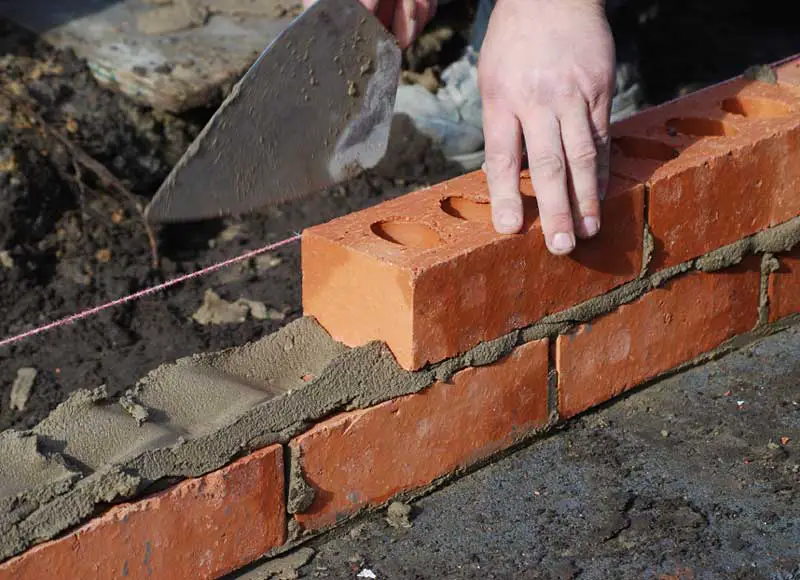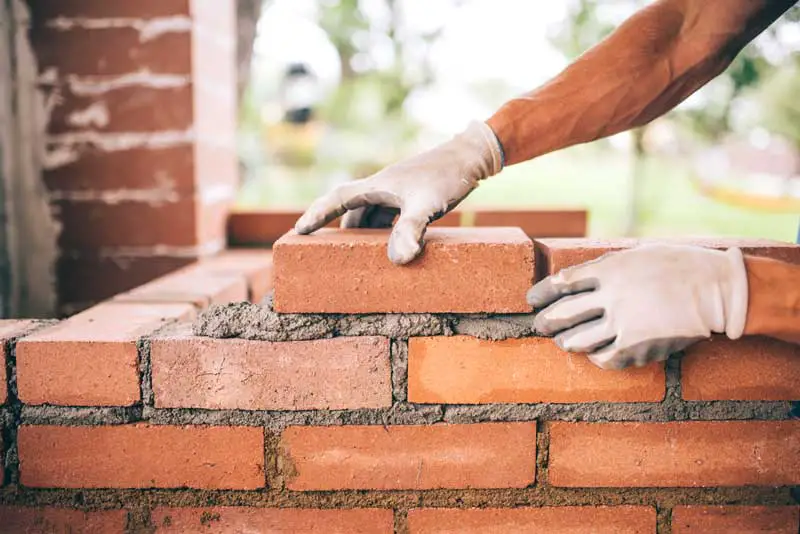
Almost all modern buildings are constructed using sand and portland cement. Traditional lime building mortars are rarely used for new builds, mostly being utilised for repairing historic and listed buildings. So why is cement used instead of lime in today’s buildings?
Generally, cement is used instead of lime due to its much faster set time. Having a faster set allows cement construction to be faster than building with lime. In the long run, buildings constructed with cement can be built quicker and more cheaply when compared to lime. Working with lime often requires more skill, which will again increase the cost of labour and the project overall.
Lime still has its place in today’s buildings. It may not be as commonly used as portland cement, but it has many advantages over cement which aren’t as well known. Let’s take a look at some of the reasons cement is often picked over lime, and why building with lime is still a worthwhile endeavour.
1. Cement Has a Faster Set Time Than Lime
Cement has a much faster set time than lime. The initial set is the time from when the mortar is mixed to when it is no longer workable (it loses its plasticity). As a rough guideline, an initial set can take anywhere from 15 minutes to 2 hours depending on the conditions being built in. A final set will usually take 24-48 hours when building with cement.
Lime mortars cure much slower than cement mortars. This is mainly because the process of the set is different. Cement reacts with water and crystalises, causing the mortar to harden. Lime putty mortars set via carbonation. Carbonation is the process in which lime putty-based mortars, plasters and renders set by absorbing carbon dioxide out of the air. This can be a very slow process, taking weeks in most cases. Some very large buildings constructed with lime can take years to fully cure!
Lime which is still curing must be kept within certain conditions. Direct sunlight, harsh winds, low temperatures, and extremely wet conditions must all be taken into account before building with lime mortars. Some of these factors will also affect cement, but because the set time is so much quicker it’s easier to work around them. For example, having to keep lime frost free for a few weeks can be a challenge in the winter. Cement would only need to be kept frost free for a couple of days. Cement’s fast curing time is the main factor which sets it apart from lime. It’s quick and therefore cheap to build with.
Related article: The Differences Between Lime Plaster, Mortar and Render
2. Cement is More Convenient to Purchase And Use
Any good builders merchant will have cement available. Because of its wide-reaching use and high availability, it makes working with cement far easier than trying to find the correct lime to use. In addition, making a cement mortar is often more straightforward when compared to a lime mortar. A simple 3:1 or 4:1, aggregate to cement is sufficient for most applications. Having said this, it is possible to buy pre-mixed lime mortars which offer convenience and take the guesswork out of making a lime mortar.
Related article: What Are The 3 Main Types of Lime Used in Construction?
In contrast to cement, many builders’ merchants only offer hydrated lime. Hydrated lime (not to be confused with hydraulic lime) is a far inferior product when compared to lime putty and hydraulic lime. As a general rule, hydrated lime is only added to cement mortars. This is to help improve the workability of the cement mortar. Hydrated lime should never be used instead of hydraulic or putty lime in restoration projects.
3. Less Skill is Required to Work With Cement When Compared to Lime
Now, I’m not trying to belittle building with cement. It requires high-quality training and skilled workmanship to ensure it’s done correctly. However, building with lime is a far more involved process. Building with lime is often seen as a specialist trade, and because of this, the labour is more expensive compared to cement.
For example, because lime has a much longer set time than cement, it requires more aftercare. Where cement would fully set and no longer at risk of frost damage within a couple of days, lime mortars can take weeks. This requires tradespeople to work more hours, hanging sheeting to protect lime while it’s curing from harsh frost, wind and sunshine.

Building with lime requires many more precautions and the tradesmen involved need more training and knowledge to use and care for lime in the correct way. The added hours needed to build with lime, and more skilled tradesmen mean the labour cost is higher than using cement. As a result, it often doesn’t make as much financial sense to build with lime.
Related article: What are the Differences Between Lime and Cement?
4. Cement Has a Much Harder Set Than Lime
When cement is fully cured, it’s much harder than lime-based mortars in terms of compressive strength. This is very important for high-rise buildings. The taller the building, the more weight and pressure on the mortars at the bottom. In these cases, lime wouldn’t be as suitable. Some of the hardest reinforced concretes can reach strengths of 50n/mm2. Even hydraulic limes, which are harder than putty lime are around 5n/mm2. Whilst the strength of lime can be increased vastly by adding pozzolans isn’t as convenient as using cement.
Many people assume that the harder the mortars, the better. This isn’t actually the case. Whilst that may be true for high-rise buildings it isn’t as true for many normal-sized buildings.
In construction, the weakest point should always be the mortars and not the stone, masonry or bricks. This may sound a bit counterintuitive but let me explain why. If the mortars used are stronger than the stonework of the building, any flexing or movement will cause the weakest link (the stonework) to crack and break.
Related article: Should You Use Lime Mortars For Pointing?
Historical buildings were always constructed with this fact in mind. When the mortar is weaker than the stonework, it will take the brunt of any movement and can be easily replaced. You can easily repoint a wall, but replacing the masonry itself would be far more difficult. Lime mortars act sacrificially to protect the building. Cement will often cause the stonework around it to deteriorate faster, especially in historical buildings.
Should Lime be Used More?
In my opinion, lime mortars, plasters and renders are far superior building materials when compared to cement. Whilst cement has many benefits, such as cost-saving and hardness, lime has many more. Here’s a list of benefits to using lime in your project:
- Lime mortars, plasters and renders are far more aesthetic
- They protect the stone, brick and other masonry in buildings
- Lime building materials can help get rid of damp issues and mould
- They are more eco-friendly than building with cement. They are burnt at a much lower temperature than cement. As they cure, they absorb carbon dioxide back out of the air.
- While cement is much harder, this can make them brittle and cause them to degrade more quickly. Lime’s are flexible, and because they aren’t brittle, they are often far more durable than cement. Click here to look at a related article on how long lime mortar pointing should last.
- Limes are self-healing, and rather than movement causing large cracks like in cement, many micro-cracks form in lime mortars and plasters. ‘Free lime’ within the mortar or plaster will eventually fill these cracks.

